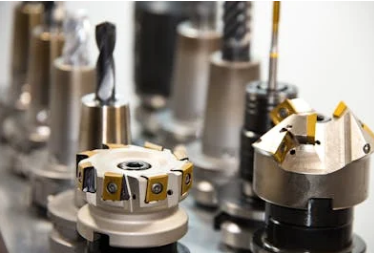Selecting the Right P&H Crane Parts for Enhanced Performance

After twenty years in the crane industry, I've learned a universal truth: your crane is only as good as its parts. I've seen companies lose thousands of dollars in downtime because they tried to save a few bucks on cheaper components. Today, let's discuss making smart choices regarding P&H crane parts and how it can transform your operations.
The Real Cost of Cutting Corners
Remember that old saying, "Buy cheap, buy twice"? Well, in the crane industry, it's more like "Buy cheap, buy twice, and pay for expensive downtime." Last month, I visited a construction site where a crane was sitting idle because of a failed bearing. The company had opted for a non-genuine replacement part instead of authentic P&H crane parts. The money they saved initially? Gone in just four hours of downtime.
Genuine vs. Aftermarket: The Great Debate
Let's be honest—not all aftermarket parts are created equal. While some third-party manufacturers produce excellent P&H crane parts alternatives, others... well, let's just say you get what you pay for. The key is knowing when to invest in genuine parts and when aftermarket options make sense.
For critical components like main bearings, hydraulic systems, and control mechanisms, I always recommend genuine P&H crane parts. These components are the heart and soul of your crane, and their failure can lead to catastrophic consequences. However, for less critical components like certain filters or basic hardware, quality aftermarket parts might be a reasonable choice.
Smart Inventory Management: A Game-Changer
Here's something I learned the hard way: having a smart parts inventory strategy is just as important as choosing quality parts. I once worked with a company that kept minimal spare parts on hand to "save money." When their main hoist motor failed, they had to wait three weeks for new P&H crane parts to arrive. The project delays cost them more than maintaining a proper inventory ever would have.
Consider creating a tiered inventory system:
- Critical components that need immediate replacement
- Common wear items with predictable replacement schedules
- Non-critical parts that can wait for ordering and shipping
Preventive Maintenance: Your Secret Weapon
Want to know the secret to extending the life of your P&H crane parts? Preventive maintenance. It's not sexy, but it works. I've seen properly maintained cranes outlast their poorly maintained counterparts by years.
Create a maintenance schedule that includes:
- Regular inspections of critical components
- Timely replacement of wear items
- Documentation of part performance and longevity
- Analysis of failure patterns
The Digital Advantage
Technology has revolutionized how we track and maintain crane parts. Modern inventory management systems can predict when P&H crane parts need replacement based on usage patterns and manufacturer recommendations. This predictive approach helps you avoid both unnecessary replacements and unexpected failures.
Making the Smart Choice
When selecting parts, consider these factors:
- Application criticality
- Operating environment
- Expected service life
- Total cost of ownership
- Availability and lead times
I recently worked with a mining company that switched to a more systematic approach to parts management. By carefully analyzing their needs and maintaining an appropriate inventory of genuine P&H crane parts, they reduced their annual downtime by 60%.
Looking Ahead
The crane industry is evolving, and so should your approach to parts management. New materials and manufacturing techniques are constantly improving part performance and longevity. Staying informed about these developments can help you make better decisions for your operations.
Taking Action
Ready to transform your crane operations? Start by auditing your current parts inventory and maintenance practices. Are you making decisions based on initial cost or total value? Are you maintaining adequate stock of critical components? Are you using genuine P&H crane parts where it matters most?
Share your experiences in the comments below. What challenges have you faced with crane parts management? What strategies have worked for you? Let's learn from each other and build a community of knowledge around smart crane maintenance.
- Business
- Art & Design
- Technology
- Marketing
- Fashion
- Wellness
- News
- Health & Fitness
- Food
- Παιχνίδια
- Sports
- Film
- Κεντρική Σελίδα
- Literature
- Music
- Networking
- άλλο
- Party
- Religion
- Shopping
- DIY & Crafts
- Theater
- Drinks
